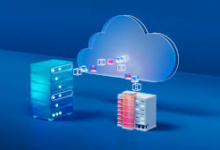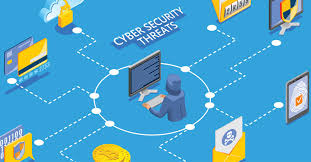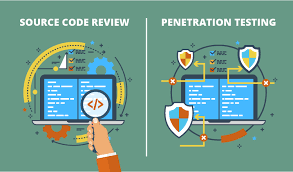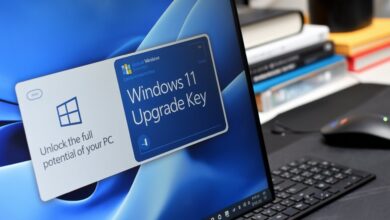How Raspberry Pi 5 is Shaping the Future of Technology

The Raspberry Pi Series has revolutionised the world of hobbyists, developers, and innovators, creating a free and experimental atmosphere among hardware enthusiasts. The Raspberry Pi 5, a compact single-board computer, offers significant performance improvements and new features for a wider range of users. This flexible tool is suitable for various applications, from coding exercises to robotics projects, and allows users to realise their wildest ideas. As technology advances, brands like Google, Apple, and Amazon will continue to dominate the tech world, while the Raspberry Pi 5 will play a key role in shaping tomorrow’s IT culture. Read on to learn more about what the Raspberry Pi 5 will help bring us.
Practical Applications of Raspberry Pi 5
The Raspberry Pi 5 is a very versatile device that has many practical applications across several sectors. These suggestions can help you with your upcoming project:
Home Automation
As a hub for smart home devices, consider a Raspberry Pi 5. With increased processing power and connectivity, you can now smoothly communicate with lights, thermostats, and security systems.
Media Centre
Transform your Raspberry Pi 5 into a Media Centre Powerhouse. You may use media apps like Plex or Kodi to stream material directly to your television thanks to its 4K capability.
Game Development
Due to its powerful graphics, this is the best Pi so far for game development/gaming. You can develop 2D or 3D games with Unity or Godot.
Educational Projects
More importantly, the Raspberry Pi 5 is still an excellent device for teaching programming and electronics. It comes with better specs now, so it is more capable of other learning ideas and is great for learning coding and hardware interaction.
What’s New in Raspberry Pi 5?
The Raspberry Pi 5 boasts a number of intriguing new features and enhancements over its predecessors, making it a good option for a wide range of applications. Here is a summary of the new features of the Raspberry Pi 5:
1. Improved Processing Power
Thanks to a beefier quad-core ARM Cortex-A76 processor, the Raspberry Pi 5 offers punchy speed and efficiency over earlier Pi models. This equates to faster multitasking and load times, making it great for more challenging applications. A side effect is that users who run memory-hungry programs (e.g., programming environments, or media editing tools) can expect a substantial performance boost. This improvement improves the user experience and allows developers to use the Raspberry Pi 5 for more advanced projects that are difficult to run.
2. Increased Memory Options
The Raspberry Pi 5 has up to 8GB of RAM, which is additional capacity for intensive applications. This significantly upgrades more extensive databases, web servers, and multitasking environments. Additional RAM allows users to handle multiple background applications without lag, providing smooth workflows during development or data analysis missions. Additionally, the added RAM space makes things like dual-booting virtual operating systems or server hardware emulation more feasible, increasing its curative flexibility.
3. Enhanced Graphics Performance
The new GPU, the VideoCore VII, supports up to 4K at 60 fps in graphics. It is now a complete game changer for media/streaming/gaming/any graphical application projects. This allows for even more powerful graphics performance than previously seen, something that will be of significant interest, whether in the form of a home theatre setup or game design. Better resolution handling results in more apparent displays and, therefore, gives a splendid user interface, which is exactly what the Raspberry Pi 5 should be used for where good display quality is required.
4. Expanded Connectivity
The Raspberry Pi 5 boasts twin HDMI outputs, USB 3.0 ports, and integrated Wi-Fi 6 for improved connectivity and quicker data transmission. The two HDMI outputs make it possible to connect various screens and thereby increase the productivity of users looking for extra screen space. This is especially useful for coding, video editing, or data work, where you find that using more screens means you can do more. Wi-Fi 6 enables better network speeds and reliability, which should help the Raspberry Pi 5 fit in more easily with today’s smart home setups or IoT projects.
Tips for Maximising Your Raspberry Pi 5 Experience
Making the most of your Raspberry Pi 5 experience will help you use this flexible microcomputer for more fun and productivity. To help you get the most out of your Raspberry Pi 5, consider the following advice:
- Stay Updated: Check for updates to your operating system and any installed software, so you have the latest features, functionality, and security improvements.
- Explore GPIO Pins: The Raspberry Pi 5 has 40 General Purpose Input/Output (GPIO) pins, giving this device tremendous hardware functionality. Create various projects using sensors, motors, and other electronic components.
- Join the Community: The Raspberry Pi community is vast and helpful. Join forums, social media groups, and local meetups to exchange ideas, get help, and participate in projects together.
Conclusion
With improved performance, connection, and adaptability, the Raspberry Pi 5 represents a major step forward for the series. This robust board offers many opportunities for developers of all experience levels, educators, and enthusiasts alike. Take advantage of the Raspberry Pi 5’s newfound computational capabilities by diving into your next project. You may innovate and be more creative with your projects thanks to its enhanced capabilities. Accept the materials and community help offered to make the most of your Raspberry Pi experience and realise your ideas.





